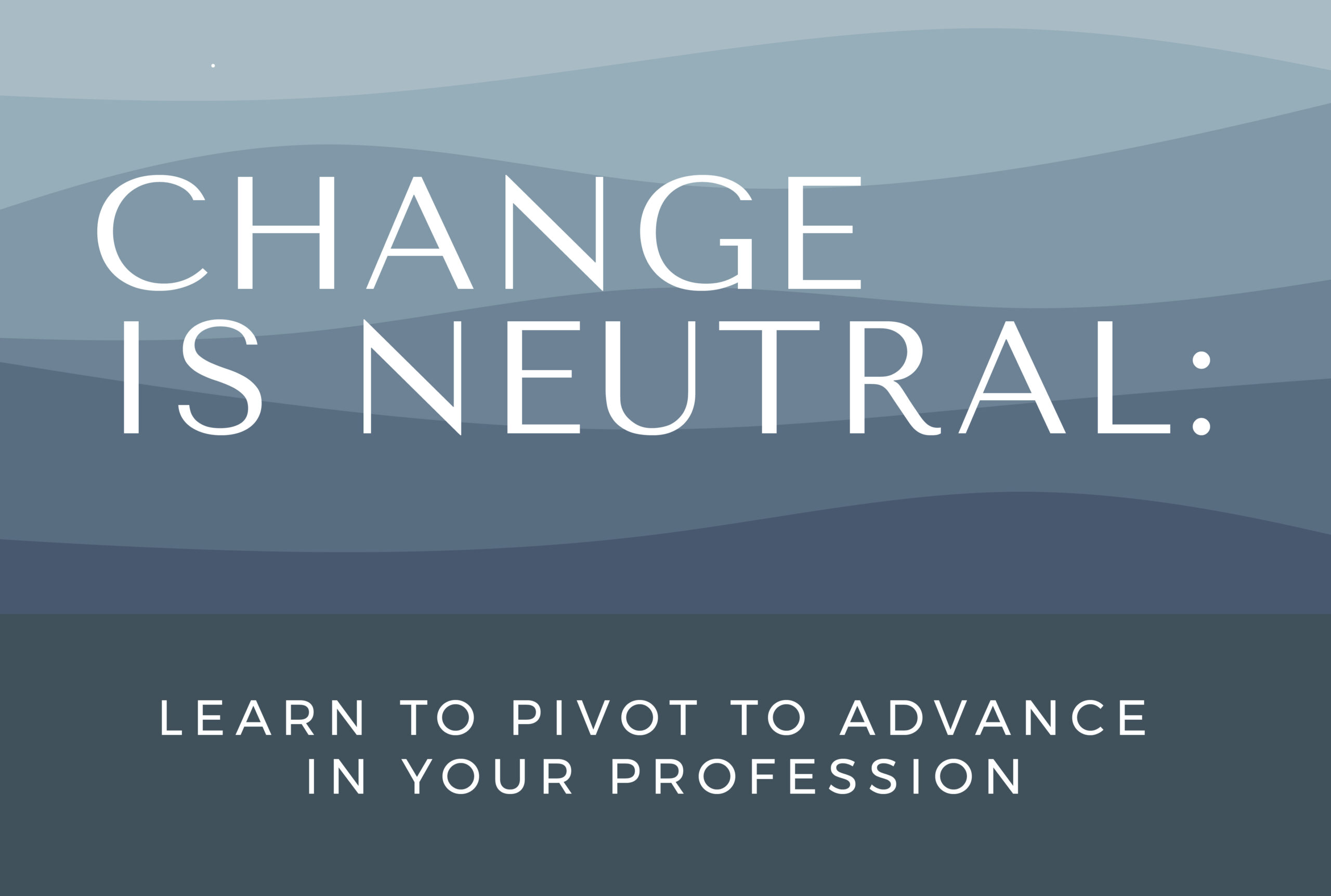
Change is Neutral: Learn to Pivot to Advance in Your Profession
Inspired by this week’s Moms Making Six Figures Podcast with Alexandra Lundgren, a Financial Advisor with a wealth of knowledge and experience in the financial sector, who believes that change is both constant and out of our control. What we can control is the perspective of change we bring into the boardroom, and rather than fear it, utilize it to our benefit.
Although change is constant, it doesn’t change the fact that for many of us, it is at the center of most of our difficult decisions and circumstances as largely controlled and stable adults. And if the last year-and-a-half of being through the pandemic wringer has taught us anything, it’s that our work environment is no longer immune to sweeping change. We used to fear mergers and acquisitions, now we’re facing a near literal collapse of the corporate ladder leaving employees in the limbo of what Sheryl Sandberg, Facebook’s COO, now calls a “jungle gym”. Just as we learned to embrace and utilize change to our benefit in our personal life, we must bolster ourselves to remain both competitive and relevant in today’s work culture. Ultimately, our ability (or inability) to adapt determines our ability to advance.
- Standing Still in Uncertainty
Whenever a change occurs, we are faced with unfamiliar challenges causing us to feel anxious, apprehensive, and altogether uprooted. Rather than swimming in the sea of unknowns, it is imperative that we take hold of what we do have control over—our perspective. Worldwide recruiting experts, HAYS, suggests asking yourself the following questions:
- Is your interpretation of the change you are facing rational, objective and based purely on the facts?
- Can you challenge your interpretation with an opposing argument?
- If so, what’s the alternative perspective of this situation?
If you can get to eye of the storm and pinpoint where your angst about the change is coming from, you are more apt to change your mindset, and begin taking the other steps necessary to move forward toward a productive outcome.
- Connection Through Discord
Whether you’re the instigator of change, or on the unenlightened receiving end of a structure’s upending, it is important for you and your employees to feel like you have connection over shared concerns and fostered relationships. Forbessuggests granting space for personal conversations to process the stress and “adapt more quickly to change”.
- Speak Up! Communicate and Ask Questions
A major contributing factor to what the American Psychological Association has discovered about “organizational changes such as restructuring or new leadership [that] can lead to employees who overly stressed, have less trust in their employers, and have a greater desire to find new jobs” is the onslaught of secondary information. Without directly communicating with those behind the change, it is easy to listen to the most trusted voice in the room—even if that trusted voice is speaking from a place of second hand information. Instead, communicate your concerns to both your co-workers and supervisors, and ask specific and vague questions to address all of the “what if’s” bombarding you. Be proactive in seeking out first hand knowledge to subdue your suspicions and skepticism.
- Resistance is Futile! (And Detrimental)
We cause ourselves more grief than is necessary in our clinging to “the way things were” or “the way things have always been” by activating our Avoidance Coping powers. The truth is that avoiding the change won’t help us cope at all because the change is occurring whether or not we embrace it. Instead, and in the hopes of using the change to our benefit, we must practice active coping by tackling the problem head-on, “Recognizing and accepting change is one of the first steps toward managing it.”
- Change Through the Lens of a Growth Mindset
In order to harness change and its energy, we must change our perspective toward it. When we take hold of our negative thoughts toward change and confront those thoughts with reality and positivity as a potential for growth, we begin to reframe our view. We determine where our fears are stemming from, and we address them with a simply cost/benefit analysis. For example, “additional responsibilities and the opportunity to manage your workload more independent could help to advance your career.”
Change is not the enemy, but our resistance to it certainly is. Change becomes a direct reflection and amplifier of our greatest fears and insecurities; let’s utilize this opportunity to stand firmly grounded in the known and to embrace the opportunity of the unknown. No one achieved 6-figures by shutting the door on change, instead they answered it and found opportunity on the other side.


Post a comment:
You must be logged in to post a comment.